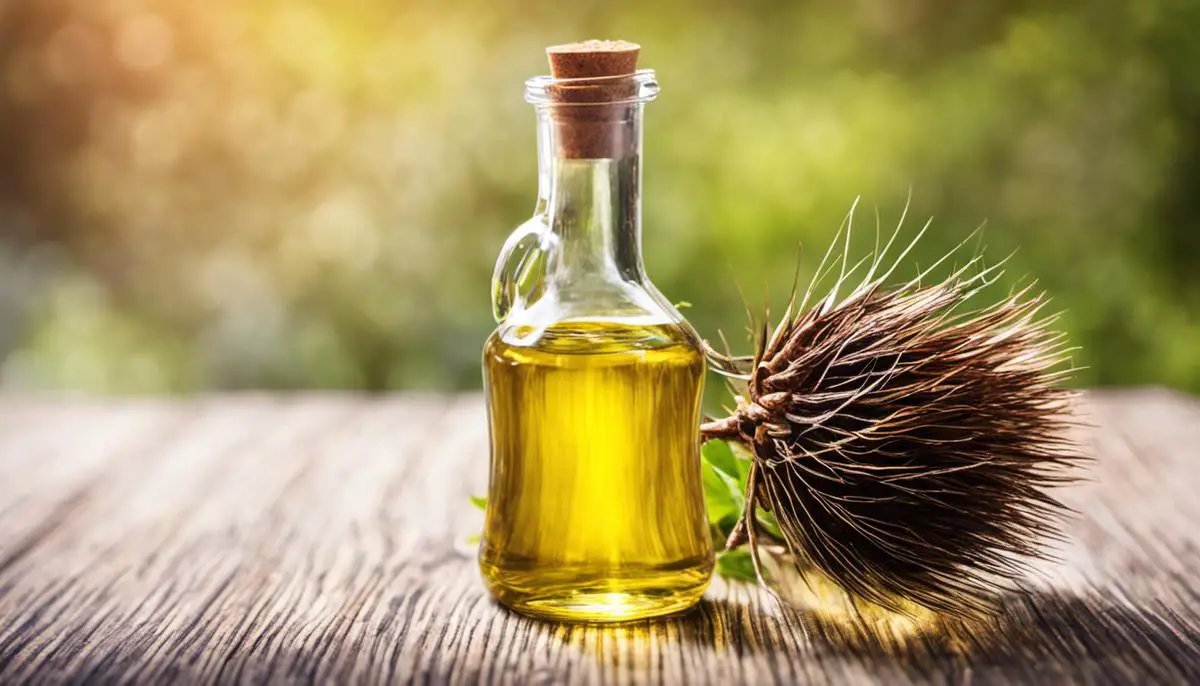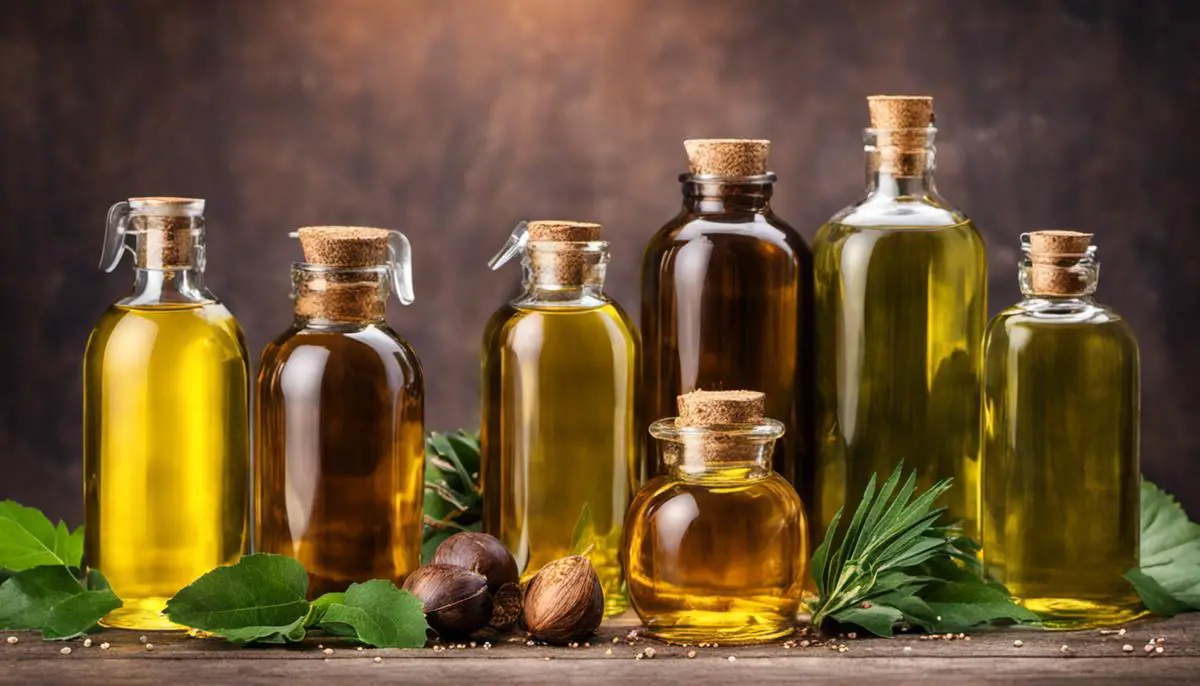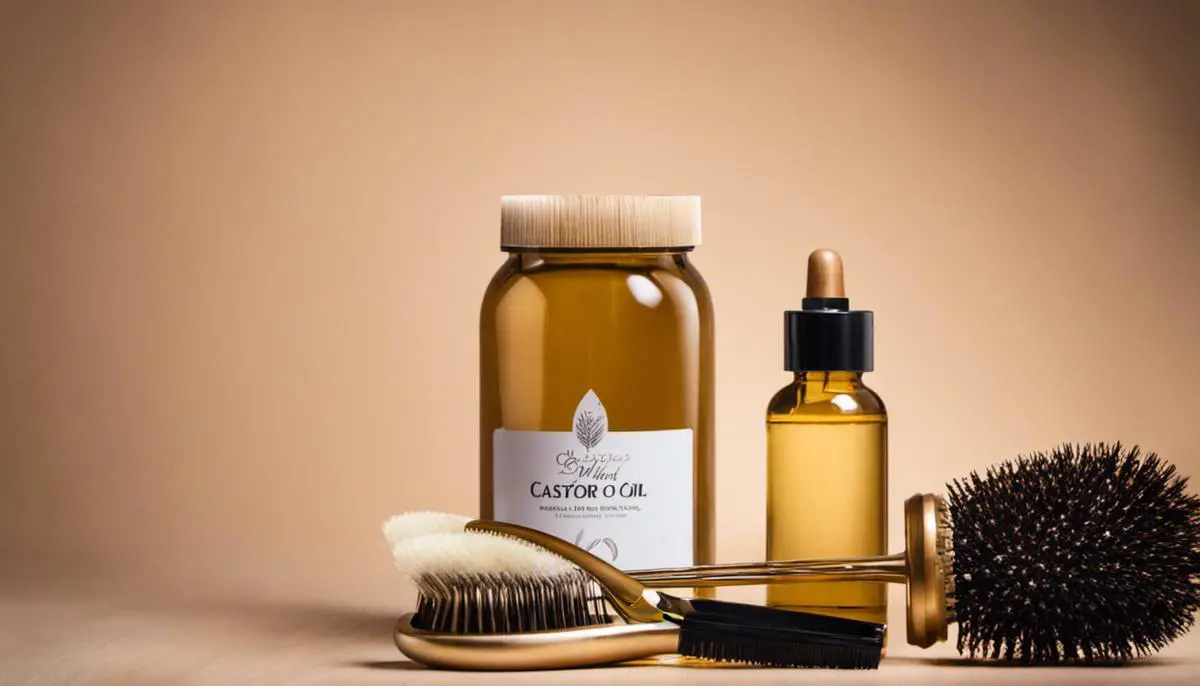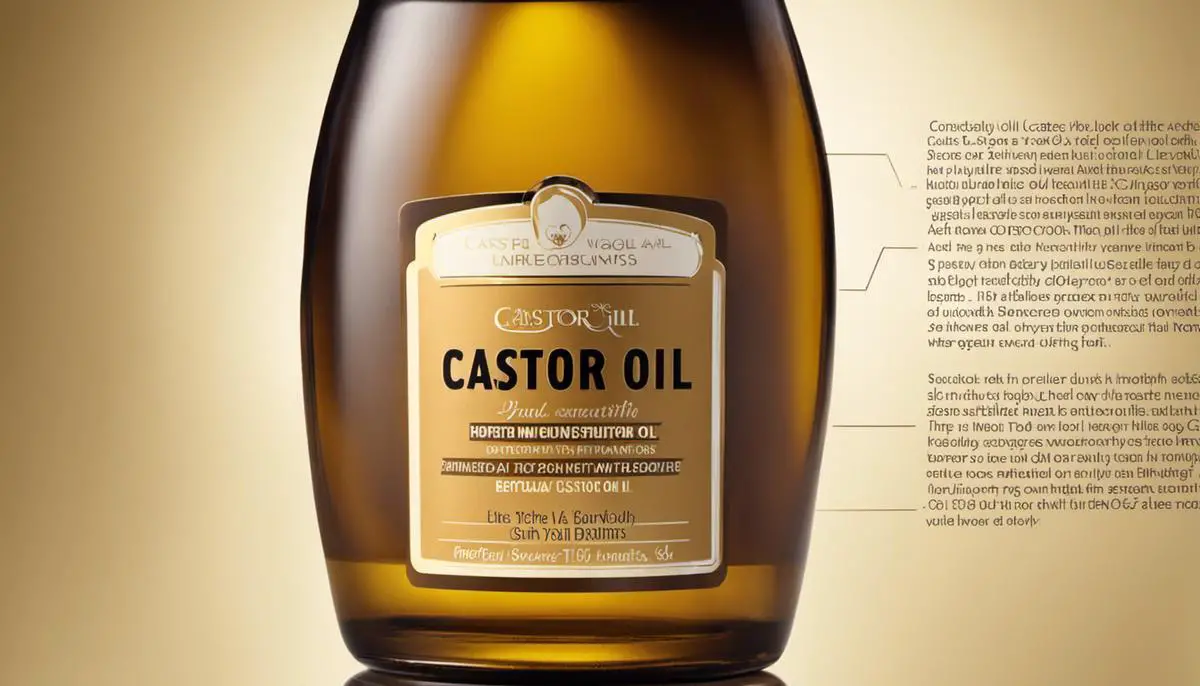Struggling with dull, lifeless hair? Look no further than your kitchen for the perfect remedy. A treasure trove of essential oils, your pantry could hold the key to transforming your hair from drab to fab. At the heart of our discussion today is castor oil, a powerhouse ingredient known for its incredible hair health benefits. Whether it’s the ricinoleic acid or the omega-6 fatty acids, this oil is a sure shot formula for breath-taking tresses. Delve into the marvels of this incredible oil, explore the best places to snag high-quality ingredients, and learn to whip up hair revitalizing masks right at home. Are you ready to step into a world where good-hair-days are a daily routine?
The Benefits of Castor Oil
Understanding Castor Oil and its Benefits for Hair
Castor oil is a versatile oil extracted from the seeds of the Ricinus communis plant. It has been used for hair care for centuries due to its numerous beneficial properties. The oil is rich in ricinoleic acid, an omega-6 fatty acid, which is known to improve blood circulation to the scalp thereby promoting hair growth. This fatty acid also helps to nourish the scalp and strengthen the roots of your hair.
Omega-6 fatty acids, found abundantly in castor oil, are essential fatty acids that are necessary for healthy hair. They stimulate hair growth, add moisture to the hair, and help prevent breakage. They also provide essential proteins that give hair its strength and prevent it from becoming brittle and thin.
Castor oil is also high in antioxidants, which support the keratin in hair, making it smoother, stronger, and less frizzy. Additionally, it’s antibacterial and antifungal properties can help to prevent scalp infections and issues like dandruff.
Different Types of Castor Oil
There are primarily two types of castor oil that are used for hair care: cold-pressed castor oil and Jamaican black castor oil.
Cold-pressed castor oil is produced by pressing fresh, raw castor beans; no heat is involved in this process. This method enables the oil to retain its natural properties, including its high nutrient content and thick consistency, making it ideal for hair care. Cold-pressed castor oil is excellent for moisturizing hair, promoting growth, and thickening strands.
As opposed to cold-pressed castor oil, Jamaican black castor oil involves roasting the beans before pressing them for oil. This process results in an oil with a rich, dark color and a burnt nutty scent. The ash from the roasted beans, which gets into the oil, increases its clarifying properties. Jamaican black castor oil is especially beneficial for individuals with dry or chapped scalps, as it helps to stimulate the production of natural oils in the scalp. Additionally, it’s well suited to help repair damaged, brittle or over-processed hair.
Different hair types may respond differently to the two types of oils, so it’s best to experiment to see which works best for you. It’s also important to remember that pure castor oil is extremely thick and viscary, so it’s often best when mixed with other carrier oils, like coconut or jojoba oil, for easier application.

Sourcing Ingredients
Sourcing Castor Oil
Castor oil is a key ingredient in a homemade hair mask and can be found in many places. You can find organic or cold-pressed castor oil in most local health stores. Shopping locally can also be an opportunity to support small businesses in your community. This type of castor oil is also available online through various eCommerce platforms, such as Amazon and eBay. Some specialty beauty websites, like Sephora or Ulta, may also carry it.
Finding Other Natural Ingredients
Besides castor oil, other natural oils like coconut oil and jojoba oil are commonly used in hair masks. These are widely available in most grocery stores, especially in the cooking oil section. You could also find them in health food stores or online. Label-read is advised, as you’ll want to ensure they are pure, unrefined, and ideally organic.
Choosing Essential Oils
Essential oils add a pleasant fragrance to your hair mask, but they can also offer additional benefits like promoting hair growth or soothing the scalp. Lavender, peppermint, and rosemary essential oils are popular choices for hair masks. You can buy essential oils in health food stores, some pharmacies, and online. Be sure to buy from a reputable source to ensure you’re receiving 100% pure oils.
Tips for Purchasing Ingredients
When buying your ingredients, it’s important to read the labels carefully. Look for products that are organic, cold-pressed, and don’t contain any added chemicals. This ensures that your hair mask is as natural and beneficial as possible. Also, keep in mind the quantity you need. If you plan to make hair masks regularly, it may be more cost-effective to buy your ingredients in bulk.
Purchasing high-quality, natural ingredients is a crucial step to making an effective homemade castor oil hair mask. With careful research and mindful shopping, you can find all the components you need to start making your own hair mask right at home.

Creating Hair Mask Recipes
Creating a Basic Castor Oil Hair Mask
Making a basic castor oil hair mask is quite straightforward. Here’s a simple recipe to get you started:
- Combine 2 tablespoons of castor oil with one tablespoon of coconut or jojoba oil in a small bowl.
- Apply the mixture to your hair, starting from the roots and working your way to the ends.
- Let the mask sit for 20-30 minutes. Afterwards, shampoo and condition your hair as you normally would.
Integrating Other Beneficial Ingredients
To boost the nourishing effects of your hair mask, consider adding ingredients like honey, egg, and avocado.
- Honey can add moisture to your hair and promote scalp health. To include it in your mask recipe, use 1 tablespoon of raw, organic honey for every 2 tablespoons of castor oil.
- Egg is high in protein, which can strengthen your hair. Mix one whole egg with two tablespoons of castor oil for this purpose.
- Avocado is rich in healthy fats and can help to deeply hydrate your hair. Mash half an avocado and combine it with the castor oil to make a mask.
Remember to mix all ingredients thoroughly before applying them to your hair.
Adjusting Proportions to Your Hair Type
Depending on your specific hair type or needs, you might need to adjust the proportions of these ingredients.
- For extremely dry and damaged hair, increase the amount of castor oil or add more hydrating ingredients like honey or avocado.
- If your hair is oily, decrease the quantity of castor oil and consider adding aloe vera gel. This ingredient can help to balance your scalp’s oil production.
- For hair that is thinning or falling out, add more castor oil or consider using other oils known for promoting hair growth, such as rosemary or peppermint oil.
By experimenting with different recipes and ingredient proportions, you’ll be able to develop a hair mask that best suits your hair’s unique needs.
Safety Precautions
As always when using new products on your hair or skin, it’s best to conduct a patch test initially to make sure you are not allergic to any ingredients. If any discomfort or reaction occurs, discontinue use immediately. Always be aware of the quality and expiration date of the ingredients you are using.

Application Techniques
The Perfect Castor Oil Hair Mask Recipe
Begin by preparing the mask. You will need pure castor oil, one egg, and two tablespoons of mayonnaise for the ultimate hair hydration recipe. Crack the egg into a bowl and add two tablespoons of mayonnaise. Stir in a tablespoon of castor oil and blend until you get a well-homogenized mixture.
Proper Application for Maximum Benefits
To get the most out of your homemade castor oil hair mask, follow these techniques:
- Start with unwashed, dry hair.
- Using your fingers or a hair color applicator brush, apply the mask, making sure to coat from the roots to the tips of your hair.
- It’s easier to apply if you divide your hair into sections.
- Don’t skip the scalp – massaging the mask into the scalp can stimulate circulation and promote healthier hair growth.
Duration for Winning Results
After you’ve applied the mask to your hair, cover your head with a plastic cap or wrap to maximize the mask’s effectiveness. The heat generated under the cap helps to activate the ingredients, allowing them to penetrate the hair shaft better.
Leave the castor oil mask on for about 30 to 45 minutes. However, if your hair is excessively dry or damaged, you can leave it on for up to two hours or even overnight.
Frequency for Ongoing Treatment
It’s recommended to use the castor oil hair mask once or twice a week initially. As your hair health improves, you can reduce the frequency to once every two weeks.
Rinsing Off Without Residual Oilyness
Thoroughly rinse off the mask using warm water. You might need to rinse several times to ensure all the oil is out. It’s advisable to use a mild, moisturizing, sulfate-free shampoo for the final rinse. This helps to cleanse the hair without completely draining the hydrating oils it has just absorbed.
After rinsing, gently towel dry your hair and let it air dry. Avoid heat styling immediately after the treatment to prevent drying out your hair.

Ready to start transforming your hair with homemade hair masks? Now, you’re equipped with a wealth of knowledge about the different types of castor oil, the best places to find premium ingredients, a host of different hair mask recipes to suit your hair type, and the right techniques to apply these masks. Remember, regular use pays off; hair health doesn’t improve overnight. So, brace yourself for a journey to beautiful hair; it may be filled with trial and error, but the destination- a head full of lush, shiny, healthy hair- is definitely worth the effort. Here’s to rediscovering the beauty of natural ingredients and unlocking the potential of homemade masks!
